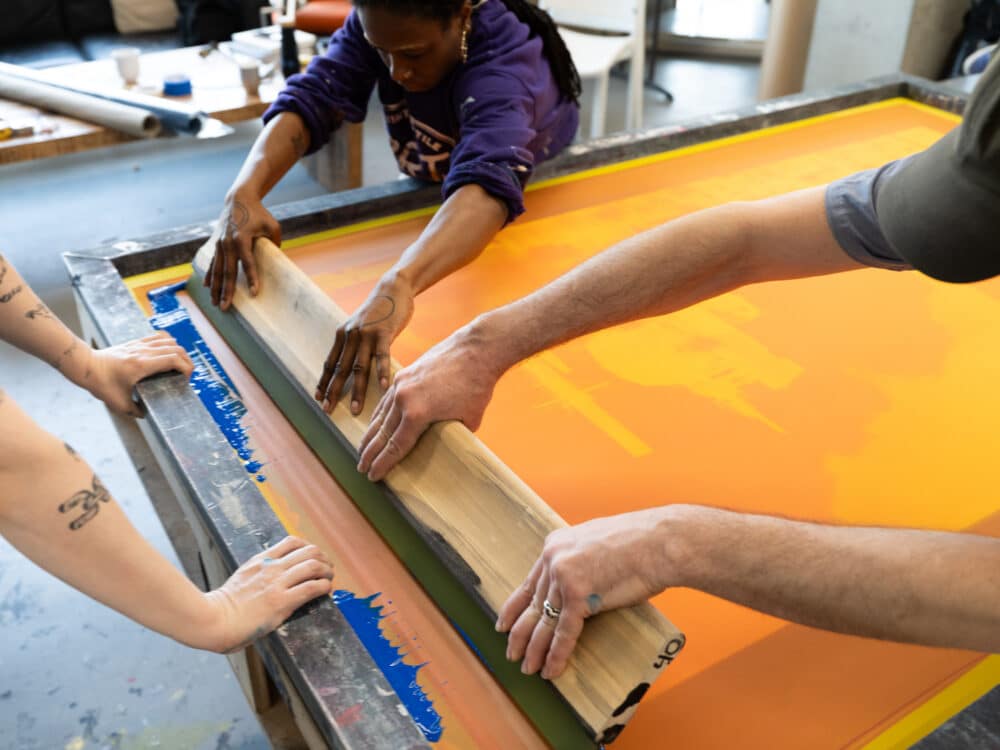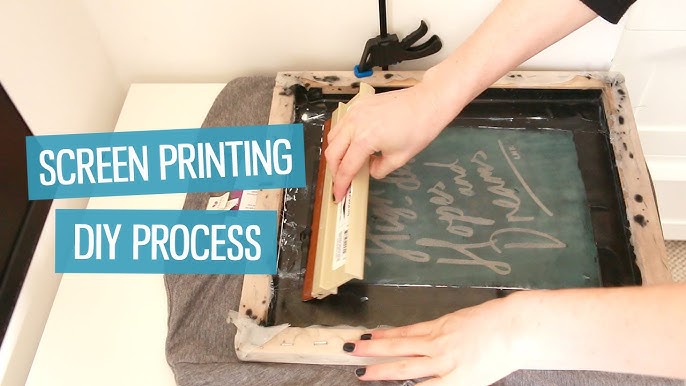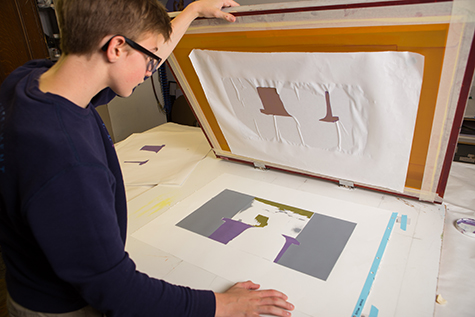ChatGPT said: Unbiased breakdown of 10:9 Design reviews: what you should know before ordering
The Vital Guide to Comprehending Screen Printing and Its Versatile Makes use of
Screen printing has a rich history that goes back to ancient times, progressing into an innovative technique utilized across various industries today. This guide discovers the intricacies of the screen printing process, outlining its applications in home, advertising, and fashion design - 10:9 Design Embroidery. Comprehending these basics can open innovative capacity for both artistic and commercial jobs. The following sections will certainly disclose crucial tips and techniques to boost one's screen printing ventures
The Background of Screen Printing
Although screen printing has origins that map back centuries, its advancement reflects the artistic and technological advancements of various cultures. Coming from old China, the strategy was originally utilized for enhancing textiles and later spread to Japan, where it ended up being indispensable to Ukiyo-e woodblock printing. The method shifted to Europe in the 18th century, where it got appeal amongst craftsmens and business printers. The development of photo solution in the 20th century transformed screen printing, enabling more detailed designs and higher efficiency. Artists like Andy Warhol even more pushed its appeal, making use of the medium to produce legendary works that combined commercialism and great art. By the late 20th century, screen printing had developed itself as a flexible technique, used in fashion, marketing, and great art. Today, it continues to develop, integrating electronic modern technology and expanding its applications throughout different markets.
The Screen Printing Process Explained
Screen printing transforms creative visions into tangible layouts with a collection of specific actions. At first, an image is created and then moved onto a screen, typically made from great mesh textile stretched over a frame. A light-sensitive solution is related to the screen, which is revealed to light, hardening in areas not covered by the picture. After washing out the unhardened emulsion, a pattern is created.
Next off, the screen is positioned over the substratum, whether it be textile, paper, or one more material. Ink is then pressed with the open locations of the stencil making use of a squeegee, depositing the design onto the substratum below. This procedure can be repeated for multiple shades, calling for separate screens for each hue. Lastly, the printed product is treated using warm to ensure the ink sticks properly, leading to a long lasting, lively design prepared for usage.
Types of Screen Printing Techniques

Additionally, specialty techniques, such as discharge screen printing, remove dye from the fabric to develop softer prints, while foil screen printing applies metallic aluminum foil to attain a shiny finish (10:9 Design reviews). Each strategy supplies unique qualities, accommodating various innovative demands and manufacturing ranges, eventually broadening the opportunities within the screen printing domain
Applications of Screen Printing in Various Industries

Furthermore, the signage and advertising and marketing fields make use of screen printing for producing captivating screens and banners. This technique enables for bold shades and elaborate styles that record attention. In electronic devices, screen printing is employed for using conductive inks to motherboard, crucial for part links. Moreover, the home design industry welcomes screen printing to create unique layouts on fabrics and wall art. In general, screen printing acts as a vital device across diverse fields, enhancing items with personalized and aesthetically more info attractive graphics.
Tips for Effective Screen Printing Projects
While embarking on a screen printing task, mindful interest to information can substantially enhance the last result. Choosing premium materials is necessary; this consists of the screen, inks, and substrates. Using proper mesh counts can impact ink deposition and information resolution. Preparation is similarly vital; extensive cleansing of screens and proper exposure times assure crisp prints.
Next off, accurate registration is critical for multi-color prints. Using placement tools can help achieve accurate layering. In addition, screening prints on scrap materials before manufacturing assists determine potential issues without throwing away sources.

Frequently Asked Questions
What Materials Are Best for Screen Printing on Textile?
Cotton and polyester blends are ideal for screen printing on fabric as a result of their sturdiness and ink absorption. Additionally, specialized fabrics like silk or canvas can create special appearances and surfaces, enhancing the overall layout quality.
Exactly how Do I Clean and Maintain Screen Printing Devices?
To keep and clean screen printing devices, one should frequently wash displays with ideal solvents, examine squeegees for wear, lube relocating components, and shop all products in a completely dry, dust-free setting to lengthen their life expectancy.
What Are the Environmental Effects of Screen Printing?
Screen printing can have significant environmental influences, including chemical waste from inks and solvents, water use during cleansing procedures, and power usage. Lasting practices and environmentally friendly products are vital for minimizing these adverse results.
Can Screen Printing Be Done in your home Effectively?
Screen printing can be efficiently done at home with the ideal products and strategies. Hobbyists can create top quality prints, though success relies on their skill degree, tools, and understanding of the procedure involved.
What Are the Expenses Connected With Starting a Screen Printing Business?

Beginning a screen printing business involves costs for equipment, products, and workspace. Preliminary costs usually vary from a few hundred to numerous thousand bucks, depending upon the scale, quality of equipment, and preferred manufacturing capability.
Screen printing has a rich history that dates back to old times, developing right into a sophisticated method made use of across different industries today. One more strategy, rotating screen printing, utilizes cylindrical screens, helping with continual printing on textile rolls, thus improving efficiency for massive manufacturings. Furthermore, specialty techniques, such as discharge screen printing, get rid of dye from the fabric to create softer prints, while foil screen printing uses metal foil to achieve a glossy coating. In the fashion sector, screen printing is commonly utilized to produce dynamic styles on apparel, allowing brand names to showcase their one-of-a-kind styles. Cotton and polyester blends are perfect for screen printing on textile due to their sturdiness and ink absorption.